Have you ever wondered what Christmas traditions around the world look like? Christmas celebrations look different depending on what country, town, or even family you’re celebrating with. However, you don’t have to focus on the differences in how this popular holiday is celebrated—instead, take a look at the similarities in Christmas traditions around the world! In the end, it’s these similarities that connect people everywhere as they celebrate the beautiful spirit of Christmas.
Holiday Memories Are Treasures That Can Connect Generations
How Many Countries Celebrate Christmas?
Of 195 countries in the world, more than 150 countries celebrate Christmas—these countries have marked Christmas as a nationally-recognized holiday. Many people see Christmas as a religious holiday, while others simply enjoy participating in this festive time of year. Even though Christmas is not an official public holiday in all countries, it is still one of the most widely celebrated holidays around the world.
Does your family celebrate Christmas? Do you know if or how your ancestors celebrated Christmas? Talk to your family to learn about the impact this holiday season has had across generations and across countries.
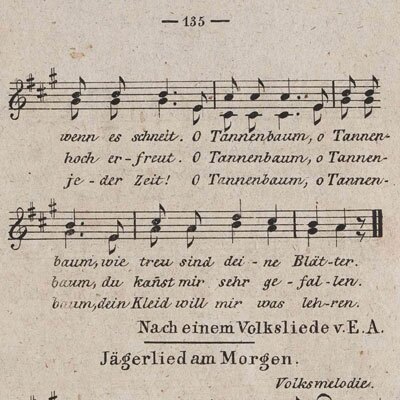
The Music of Christmastime
Part of getting into the Christmas season is listening to Christmas music and singing Christmas songs. You might be familiar with walking into a shop near the end of November and hearing popular holiday tunes on the radio. For some countries, like the Philippines, Christmas music can be heard as soon as September! (The Christmas season is called Kapaskuhan in Filipino, and it lasts for months.)
Christmas music is a widespread tradition around the world, and many songs have spread beyond their country of origin as people travel and migrate and pass their music down to the next generations. Carols such as Germany’s “O Tannenbaum” and Ukraine’s “Shchedryk” (or “Carol of the Bells”) are long-time holiday classics that you can hear in many places.
More recent songs like the United States’s “All I Want for Christmas Is You,” Venezuela’s “El Burrito de Belén," and the Cantonese song “Lonely Christmas,” are gaining popularity among the public. Consider sharing your Christmas playlist with family and friends to see the similarities. You might find some new favorite holiday tunes!
Decking the Halls for Christmas
It isn’t quite the Christmas season if it doesn’t look like the Christmas season. A common Christmas tradition around the world is decorations. While the availability and material of decorations may vary depending on culture, religious beliefs, location, resources, and even climate, you’ll be able to tell it’s Christmas based on some common festive sights.
The classic Christmas tree is a simple way to get your home ready for the holidays. The traditional image of a Christmas tree is an evergreen covered in lights and ornaments. In countries where fir trees are less abundant, people have found other Christmas plants to decorate with and invite the Christmas spirit. For example, mango and banana trees in India are covered with ornaments, wooden trees (charamicos) are handcrafted in the Dominican Republic, and some people in Australia decorate with vibrant, flowered Christmas bushes!
Nativity scenes are also a popular Christmas decoration in many cultures, from rough wooden images, to elaborate porcelain figurines, to detailed scenes delicately carved out of gourds. St. Francis of Assisi is attributed with creating the first nativity display, to remind those around him of the reason for the season. A favorite practice in some areas of the world, such as South America, is to not place the baby Jesus in the manger until Christmas morning, to signify his birth.
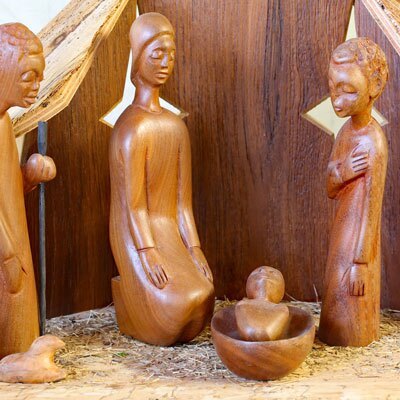


In the nativity story, a new star appeared in the sky to signify the birth of Jesus Christ. Thus, stars have become a very popular Christmas decoration, whether it be on top of a Christmas tree, hanging in your window, or strung up around a town square. You may see Morovian stars in Suriname, paróls in the Phillipines, or froebel stars in Germany!



How did your family decorate the house for Christmas growing up? Would you decorate before Thanksgiving or after? Would you get real Christmas trees, bushes and greenery, or artificial plants? Perhaps you have a nativity set that has been handed down for generations, or maybe you have a hobby of collecting them! Whatever your Christmas decoration traditions may be, preserve those memories. Future generations will want to know how you made a house feel like home for the holidays.
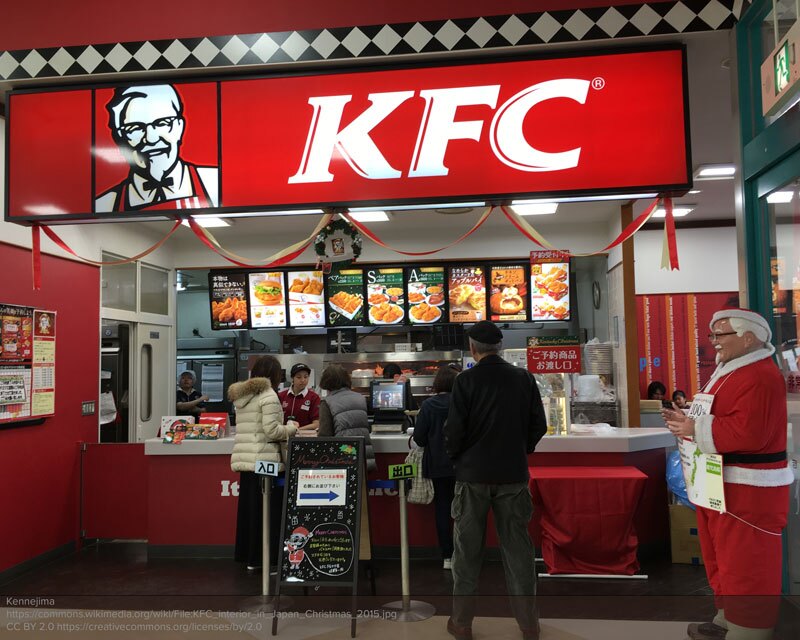
Delicious Christmas Dishes
Many people associate specific foods and flavors with Christmas. For people in Brazil and Italy, the taste of panettone signals the height of the Christmas season. For people in Japan (a country with a low Christian population that still widely celebrates Christmas), Kentucky Fried Chicken has become a Christmas staple.
With the technology of today, it’s easy to try new Christmas recipe traditions from around the world! You might try making some mombasa pumpkin pudding from Kenya or Bacalhau da Consoada from Portugal. Looking for some quick ideas? Make sure to check out our list of delicious Christmas recipes from across Europe!
Making, sharing, and celebrating food is part of most Christmas get-togethers. Don’t forget to record memories of your family’s favorite Christmas dishes on FamilySearch Memories! You’ll want to share with future generations how your family grew closer together over some well-loved holiday recipes—and make sure they have your family’s own traditional recipe!
Christmas Gift Givers
A popular Christmas tradition around the world is the act of giving gifts. In Christianity, this tradition was thought to be based on the 3 wise men who brought gifts to the birth of Jesus Christ.
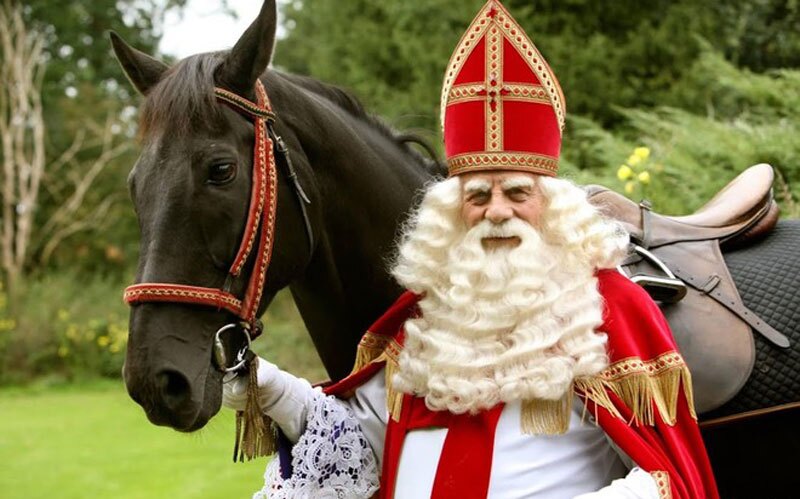
Part of Christmas gift tradition is a figure in charge of giving gifts. Santa Claus is one of the most well-known Christmas gift givers, though he goes by different names in different languages. You might hear him called Papa Noël in France, Sinterklaas in the Netherlands, and Father Christmas or St. Nicholas in the United Kingdom.
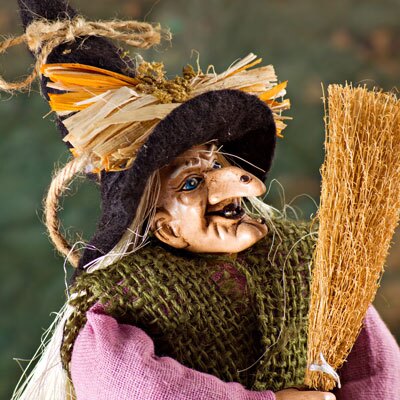
Santa is not the only Christmas gift giver in the world. In Italy, La Befana is an old woman who rides a broom to deliver stockings full of candies. The 13 Yule Lads in Iceland will each visit children over the 13 nights before Christmas.
In Paraguay, it is Los Tres Reyos Magos (the 3 Kings) who bring gifts. You might also see Santa Haraboji in South Korea, dressed in traditional robes of green instead of red.
How did your grandparents and other ancestors receive gifts on Christmas day? Does your family have any Christmas traditions when it comes to waiting for a gift giver? Maybe you stayed up late to try to catch a glimpse of Santa Claus, or you left out food and drinks for the Three Kings and their camels.
When to Celebrate Christmas
Did you know that some people celebrate Christmas for longer than the 24 hours of Christmas day? Depending on various religious and secular traditions, Christmas can be celebrated as early as September or November, or going as late as the beginning of January.
Before Christmas Day
Some cultures observe Advent, a period of reflective preparations starting 4 Sundays before Christmas and leading up to Christmas Eve on December 24. For those who practice it religiously, Advent represents a time of preparation for the birth of Christ, but also often a preparation for what Christians call Christ’s second coming. In Hungary, Advent calendars often contain chocolates or other sweets, and a daily Mass is held every day up to Christmas.

Christingles are a common Christmas tradition during Advent in many parts of the world with large Christian populations. Christingles are given to children and are made up of a lit candle placed in the top of an orange with a red ribbon around it, symbolizing Christ, the love of God, and the world.
In Mexico, Las Posadas is celebrated in the 9 days before Christmas. Las Posadas is filled with candle-lit parades of families and friends. The parades depict Joseph and Mary seeking a place in the inn.
Groups travel to different houses each night, singing a plea to let Mary and Joseph in. Once a home accepts them, the group prays and shares traditional food, such as tamales. The last evening of Las Posadas is a big party that often includes a piñata and fireworks.
Christmas Day
The actual day of Christmas can vary between countries. Most countries place Christmas on December 25, based on the Gregorian calendar. If a country or culture uses the Julian calendar to calculate holiday dates (or the Coptic calendar in the case of Egypt), Christmas will instead fall on January 7.
After Christmas Day
Some cultures celebrate the 12 Days of Christmas, the time between December 25 and January 6 (or January 7 to January 19 if going off of the Julian calendar). These 12 days represent the nativity of Jesus Christ and the journey of the wise men to visit him. The 12 Days of Christmas end with Epiphany. In Ethiopia, Ephipany is a large festival followed by a day of religious rituals.

Let It Snow! Or Not?
Snow is a classic part of Christmas tradition—well, it is if you live in an area that has a regular history of snowfall during December and January. In 2017, Vouchercloud visualized the probability of different areas in the world getting a white Christmas using data from World Weather Online. Ranking in the top 10 that year were Russia, Belarus, Finland, Estonia, Lithuania, Greenland, Kazakhstan, Canada, Ukraine, and Iceland.
The data that year also suggested that over 60% of countries in the world had 0% chance of snowfall on Christmas. For places like this, such as Madagascar and New Zealand, the Christmas spirit is felt through music, decorations, food, and gifts, but not a Christmas snowfall.
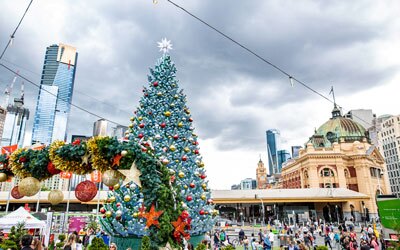

Do you live in a place with an abundance of snowmen and icicles on Christmas day? Or do you live in a place where you can enjoy a nice warm walk to a family or friend’s home for Christmas? No matter where you are for the holidays and how much it snows, continue to celebrate Christmas with family and friends and enjoy the Christmas traditions you all share.
What Are Your Christmas Traditions?
We’ve shared with you 7 Christmas themes around the world that connect us. Traditions are what bring us together as a people, and they can even help us find meaning in life. Did you learn about a tradition in another part of the world that is similar to one of your own?
Wherever you are during this holiday season, you’re bound to find someone with similar traditions about food, decorations, music, or even favorite Christmas activities to do in the snow or at the beach! Gatherings with friends and family are a perfect time to reminisce and ask others about their traditions and memories of the holiday season. If you didn’t think to bring a recorder, you can use the FamilySearch Memories app for free on most mobile devices to capture recordings or jot down notes of what you learn.
Download the Memories App for Free!
Dive Deeper into Christmas Traditions by Country
If you want to learn more about Christmas traditions specific to different countries, check out the articles below, and come back to this page in future years to find more! Learning more about how people celebrate and appreciate this holiday season, and reflecting on your own traditions will strengthen the Christmas spirit in your heart and home.






